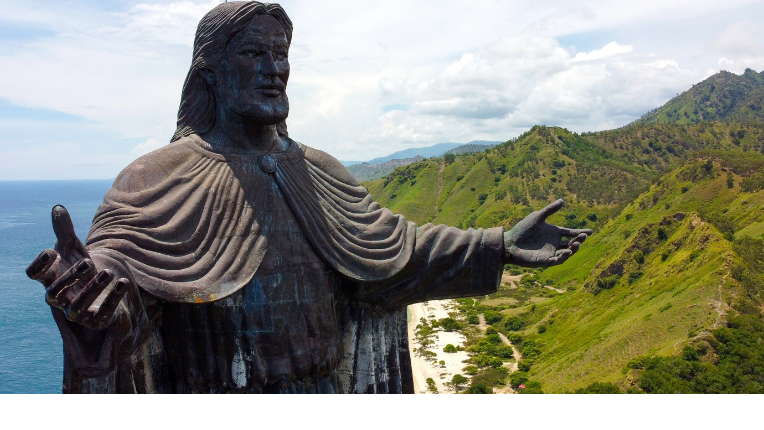Timor Leste’s first quarter century: Opportunities and challenges
Having enjoyed 25 years as an independent entity, Timor Leste has a lot to celebrate. But there are major economic challenges, write Hal Hill and Brett Inder.
16 July 2024

After 24 years of oppressive, sometimes brutal, Indonesian rule, Timor Leste achieved formal independence on 20 May 2002 (it conducted a decisive vote for independence on 30 August 1999). As the country approaches its first quarter century as an independent state, there is much to admire and celebrate. But the developmental challenges are also substantial.
The people have experienced a grim history of centuries of Portuguese colonisation and neglect, followed by 24 years of oppressive, sometimes brutal, Indonesian rule. Faced with a tabula rasa in 1999, its people have constructed a nation-state and nurtured its associated administrative structures. The country is largely peaceful, has a robust democracy, and a free media. To an extent that would have been unimaginable prior to 1999, it has established largely cordial and functional relations with Indonesia, arguably its most important bilateral relationship. And various awful counter-factuals that so easily come to mind have been avoided, most notably the other new nation-state of that decade, South Sudan.
Through its US$17 billion Petroleum Fund, it has managed its petroleum resources reasonably effectively, an achievement that so many other developing countries have found elusive (we will return to this issue below.)
Timor Leste is an open economy and society. People and money move freely across its borders. The international goodwill that was generated during its struggle for independence has led to enduring global political and financial support. This small, fragile but exuberant country is also preparing to become ASEAN’s 11th member.
Nevertheless, the country’s development challenges are daunting. This is a slow-growth economy with a significant dependence on aid, a narrow economic base, and heavy reliance on a rapidly depleting Petroleum Fund. The principal economic challenge is how the country’s leaders can formulate a development strategy that accelerates economic growth and poverty reduction.
"The principal economic challenge is how the country’s leaders can formulate a development strategy that accelerates economic growth and poverty reduction."
Three dimensions of its development trajectory are illustrative of the problems. First, the agriculture sector is growing very slowly, yet this is where more than half the country’s population live and work. Poverty cannot fall rapidly without a major lift in agricultural productivity and growth. A significant barrier remains the country’s unsettled land titles, a legacy of extended foreign occupation. This problem could and should have been largely resolved by now. Timor Leste is unlike most of the ASEAN economies at their early stages of economic development that had dynamic agricultural and rural economies that provided a basis for economic take-off.
Second, the formal private sector is anaemic. The country has a large public sector. This is the result of the proceeds of the Petroleum Fund that are coursed through the government. With the risk of an approaching “fiscal cliff” — the expiration of petroleum revenue within a decade — the government has sensibly adopted a moderately prudent fiscal position, including as it affects public sector hiring. The school system, with its impressive quantitative achievements, is graduating mostly poorly educated students who cannot find decent jobs in the private sector. The political system has been commendably effective in achieving changes of government at the ballot box, but it has been less so in improving government effectiveness. New administrations frequently involve a prolonged transition period involving turnover at the senior official levels, with the incoming staff having been drawn from a limited talent pool.
Third, this is a high-cost economy, with a domestic cost structure in effect determined by the monetary policies of the US Federal Reserve, an inevitable paradox of the temporary resource abundance, and the (sensible) decision to dollarise at the time of independence. As a corollary, the country lacks the most important relative price — the exchange rate — to ease the adjustment to a future without oil. Moreover, given the size of the Timorese economy, with a GDP about one-fifth that of the current smallest ASEAN economy, Laos, it is very unlikely to have an independent monetary policy for the foreseeable future. (Cambodia and Laos, larger and more dynamic economies, have been trying to de-dollarise for decades with very mixed results.)
It is possible to envisage a brighter economic future for Timor Leste, if the quality of domestic economic literacy can be lifted and, as in the ASEAN countries earlier, the country’s leadership is prepared to follow the advice of able technocrats. The following is illustrative of the possibilities.
First, once the border demarcation with Australia is resolved, and reportedly this is imminent, the Greater Sunrise gas fields could provide up to two decades of large resource flows. This comes with two caveats: that the country could attract foreign investors in a rapidly decarbonising world; and that the gas resources are not dissipated in the mooted, highly risky petrochemical and other huge investments with which the country’s leadership is reportedly enamoured.
Second, although the Petroleum Fund is running down, there is still a decade-long window in which to invest the funds in major development projects – better schools and hospitals, rural development, addressing the problem of gender violence, and building roads and other infrastructure. The potential for smart business-friendly investments is obvious: just across the border in Indonesian West Timor (in Indonesia’s poorest province) electricity and internet prices are about half those of Timor Leste.
Third, although Timor is not competitive in footloose manufacturing activities, there is potential elsewhere. With pro-active investments tourism could take advantage of the country’s scenic beauty, not to mention its proximity to the Bali tourism hub. Agricultural niches are also available, and not just the traditional mainstays of coffee, fisheries and spices.
Fourth, remittances are rising quite quickly and they will likely continue to do so, as workers seek employment in Australia, Europe, Korea and other ageing and labour-scarce economies. Remittance-led economic development is not the path to sustained prosperity, but it can provide breathing space while the government focuses on pressing economic challenges.
Finally, Timor Leste can benefit greatly from economic and social integration with its larger and more dynamic neighbours in ASEAN. The diplomatic protocols are necessary, and they are largely in process, but the more important benefit is learning from the development experience and practices of these countries. Notwithstanding Timor Leste’s complex language mix (four languages, with political and legal proceedings in Portuguese, which is not the daily language of the majority of Timorese), its youth can study in ASEAN countries, and return with the skills needed to inject dynamism into the political and business worlds of a country on the cusp of joining the Southeast Asian grouping.
Hal Hill is Emeritus Professor of Economics at the Australian National University.
Brett Inder is a Professor of Econometrics at Monash University.
This article originally appeared on the ISEAS–Yusof Ishak Institute's Fulcrum on 12 July 2024.
How can we help? Get in touch to discuss how we can help you engage with Asia
